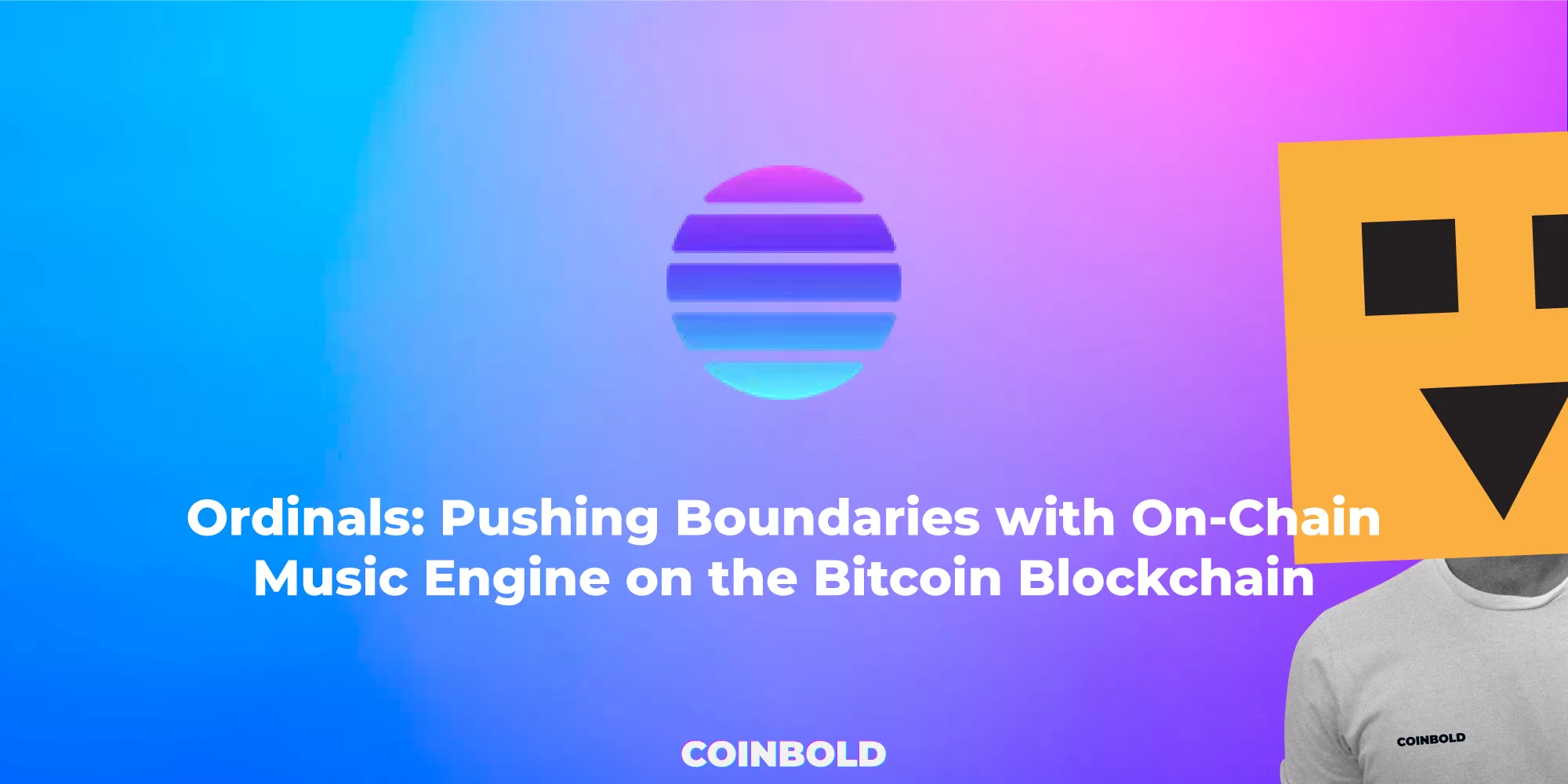Ordinals, a groundbreaking protocol, is revolutionizing what can be achieved on the Bitcoin blockchain. Recently, a fully on-chain music engine called the “Descent Into Darkness Music Engine” was inscribed onto the Bitcoin blockchain, marking a significant milestone in the integration of art, gaming, and technology. In this article, we explore the features and innovations of this music engine and delve into the impact of recursive inscriptions within the Ordinals community.
Someone just inscribe a fully on-chain music engine onto Bitcoin using recursion!
Type in any word or phrase to generate a unique on-chain song:
→ https://t.co/iBt0sWnW00 pic.twitter.com/yeczQ7J2Si
— Ord.io (@ord_io) July 2, 2023
The Descent Into Darkness Music Engine
Developed by the pseudonymous indie developer Ratoshi, the Descent Into Darkness Music Engine serves as a companion to the text-based RPG of the same name. With its retro “chiptune” vibe, the engine allows users to generate unique music tracks instantly by entering a few keywords. Notably, OpenAI’s ChatGPT played a pivotal role in creating the sounds used within this on-chain app, enhancing its immersive experience.
Recursive Inscriptions and their Significance
What sets the Descent Into Darkness Music Engine apart is its utilization of “recursive inscriptions,” a recent innovation within the Ordinals community. Unlike traditional isolated inscriptions, recursive inscriptions enable access to data from previously inscribed assets on the Bitcoin blockchain. This breakthrough overcomes Bitcoin’s block storage limitations, allowing developers to scale inscription data and substantially reduce costs.
For instance, Ratoshi explains that instead of paying significant network fees for each inscription of a larger-scale project, subsequent inscriptions incur much smaller fees. This cost reduction can be immense, with developers paying as little as $5 worth of fees for later inscriptions compared to the initial $40. This newfound affordability opens up exciting possibilities for media and app inscriptions on the Bitcoin blockchain.
Excitement within the Ordinals Community
The introduction of recursive inscriptions has generated excitement within the Ordinals community, fostering innovation across various projects. One notable example is the NFT project OnChain Monkey, which utilizes recursive inscriptions to inscribe 3D artwork on-chain with inscriptions under 1KB in total size. This demonstrates the versatility and scalability of the technology, as revealed by the pseudonymous founder of Ord.io, Leonidas.
WTF are recursive inscriptions?
Here is everything you need to know:
Earlier this year the Ordinals Protocol introduced the ability for anyone to inscribe files fully on-chain onto Bitcoin. These inscriptions are self-contained and unaware of the other files that had been… pic.twitter.com/O3jt6lhaxT
— Leonidas (@LeonidasNFT) June 12, 2023
The Ordinals Protocol
The Ordinals protocol was launched in January by developer Casey Rodarmor, capitalizing on the opportunities presented by Bitcoin’s 2021 Taproot upgrade. Leveraging a loophole, the protocol enables the inscription of various data file formats onto the Bitcoin blockchain. Each Ordinal is associated with a single satoshi, the smallest unit of Bitcoin measurement (1/100,000,000 BTC). Since its inception, over 14.6 million Ordinals have been inscribed, fostering a vibrant economy of NFT-like asset trading and meme tokens on the Bitcoin blockchain.
The Potential of Integration
The Descent Into Darkness Music Engine and the Ordinals protocol exemplify the immense potential of integrating art, gaming, and technology on the Bitcoin blockchain. As this ecosystem continues to evolve, it promises to unlock new avenues for creativity and innovation on a global scale. The ability to inscribe fully on-chain music engines and other media-rich applications demonstrates the groundbreaking capabilities of the Bitcoin blockchain, paving the way for further advancements and exciting possibilities in the future.
Conclusion
The successful integration of the Descent Into Darkness Music Engine onto the Bitcoin blockchain through the Ordinals protocol signifies a significant step forward for the intersection of art, gaming, and technology. With the advent of recursive inscriptions, the scalability and cost-effectiveness of on-chain projects have vastly improved. As developers continue to leverage these innovations, the Bitcoin blockchain is poised to become a hub for creative endeavors and pioneering applications. The journey of Ordinals and its transformative impact on the blockchain ecosystem is just beginning, offering a glimpse into a future of boundless possibilities.
FAQs
1. How does the Descent Into Darkness Music Engine work?
- The Descent Into Darkness Music Engine is a fully on-chain music engine that generates music tracks instantly based on user input. By entering a few keywords, users can create unique music with a retro “chiptune” vibe.
2. What are recursive inscriptions?
- Recursive inscriptions are a recent innovation within the Ordinals community. They allow access to data from previously inscribed assets on the Bitcoin blockchain, enabling developers to scale inscription data and reduce costs.
3. How has recursive inscriptions impacted the Ordinals community?
- Recursive inscriptions have sparked excitement and innovation within the Ordinals community. Projects like OnChain Monkey utilize this feature to inscribe 3D artwork on-chain with minimal costs, opening up new possibilities for media and app inscriptions on the Bitcoin blockchain.
4. What is the Ordinals protocol?
- The Ordinals protocol was launched in January and leverages Bitcoin’s Taproot upgrade to enable the inscription of various data file formats onto the Bitcoin blockchain. Each Ordinal is tied to a single satoshi, and it has facilitated a thriving economy of NFT-like asset trading and meme tokens.
5. What does the integration of art, gaming, and technology on the Bitcoin blockchain signify?
- The integration of art, gaming, and technology on the Bitcoin blockchain showcases the immense potential of this ecosystem. It unlocks new avenues for creativity, innovation, and the development of groundbreaking applications that can reach a global audience.

